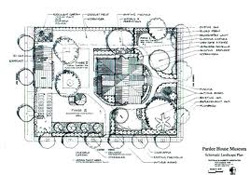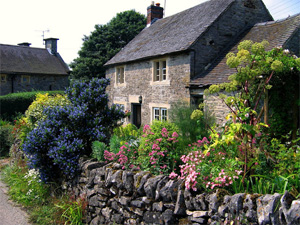One of the most neglected aspects of gardening is choosing and planning the design. Many people simply start planting flowers, and before they realize it, they have a colorful array of plants. However, without cohesive garden design ideas, and coordinated planning, they may not meet their goal of turning their outdoor living space into a peaceful retreat. Good planning and design will incorporate the style of your home, and may include your patio, porch, or other entrance, expanding your living space to include the outdoors. If you want your garden to be a place you truly enjoy, advance planning is necessary.
Garden design ideas can be simple or complex, modern or ancient, Japanese or cottage style. Whatever you choose, make sure it reflects your specific tastes. You'll also want to make your outdoor space inviting. Include comfortable seating; and perhaps a place to enjoy a cup of coffee, or brunch with a friend. Adding a fireplace, fire pit, chiminea, or other fire feature can allow you to enjoy your "outdoor rooms" during the colder months.
Let's look at examples from the opposite ends of the spectrum on garden design: formalized Japanese gardens, and English cottage gardens. Elements from both of these styles can give you inspiration, no matter where you fall on the spectrum of controlled versus natural.
Japanese Garden Design
The staples of Japanese gardens are plants, water, and rocks. Water features are considered essential, and may encompass anything from an elaborate koi pond with waterfalls, bridges, and stepping stones, to a simple reflecting pool or fountain. Rocks may be large boulders used as focal points, or a tumble of round river rocks mimicking a dry streambed. Since Japanese gardens emphasize nature, pagodas, fencing, pergolas, and other man made features are often created from rock, bamboo, or other natural materials.
Although Japanese gardens may have colorful plants, such as cherry trees, Japanese maples, or wisteria, the emphasis is usually on subtle differences in color and texture. Thus, evergreens and grasses are usually prominent in Japanese design, along with moss for shady spots. Bamboo can be used in two ways. Cut bamboo poles can be used for fencing, lattices, and other structures, while living bamboo can be planted in the garden. One caution however: Bamboo can be very invasive. If you don't want your entire yard (and your neighbor's yard) taken over by bamboo, plant your bamboo in pots so they don't spread.
Cottage Garden Design
Cottage gardens can appear so carefree that it may seem as if careful planning and design is unnecessary. However, in order to achieve the best effect, cottage gardens should be planned out in advance. For example, due to their height, hollyhocks, delphinium, and other tall flowers, should be planted near a wall, fence, or other structure to give them support. A section of white picket fence will work wonderfully for tall plants, while at the same time adding a charming element typical of cottage gardens. Smaller plants, such as coral bells and ladies mantle should be placed near the edges of the garden, or along walkways, so that they're not hidden behind the larger plants. Sweet scented flowers, such as lavender, should also be planted near pathways where visitors can enjoy their fragrance. Designing flower gardens can become a career in itself for the truly inspired.
One of the reasons cottage gardens can seem so carefree is that plants are usually not arranged in straight lines or other geometric designs. Instead, mass plantings or clumps of flowers intertwine with each other. Pathways tend to be curving rather than straight, and although walkways should be wide enough for two people to stroll along hand in hand, flowers may spill over into the path or drape above it. Paths should be informal, using natural materials. For instance, instead of concrete, use stepping stones surrounded by moss or thyme for a more natural, carefree look.
The delight of designing gardens is that you can choose any style you like. If your taste runs to formal, modern lines, with clipped box hedges and topiaries, then by all means, design a garden that uses those elements. If you prefer a bit of whimsy, use statues, pictures, antiques, or whatever accessories make you smile. Whatever garden design ideas you use, remember the main goal of a garden is to welcome you home.


